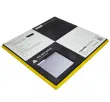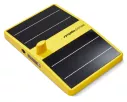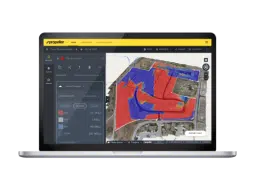UAV Data Processing Solutions
Propeller PPK simplifies UAV data processing so that it’s quick, accurate, and easy to share with everyone on site.
UAV data processing—change your surveying workflows for good
Quick or accurate survey data? Get both with drone data processing
Check out the Propeller PlatformDuring flight, a drone captures thousands of images of a worksite. It records GPS information and geotags each image as it’s captured. Meanwhile, a base station on the ground transmits raw GPS data to the drone. Propeller’s UAV data processing software uses AeroPoints as base stations.
Learn more about AeroPointsThe drone’s onboard GPS system then combines raw GPS data from the AeroPoint with its own geotags to accurately determine its position relative to the base. All of this processing is done real-time, while the drone is in flight. PPK (post-processing kinematic) occurs after the flight.
Learn more about Propeller PPKPost-flight, data is uploaded automatically to the Propeller Platform. The two sets of GPS data (from the drone and base station) are matched using the image timestamps. The onboard GPS data—less accurate than the AeroPoint—is automatically corrected, resulting in precise geotags for each image, and a point cloud that creates a reliable 3D map within 24 hours. No manual processing required.
Explore the Propeller PlatformWhat is a UAV?
UAV stands for Unmanned Aerial Vehicle. It’s an aircraft (commonly called a drone) that doesn’t require an onboard pilot, so you can fly it manually or automatically while standing on terra firma.
The benefits of drone data analytics software
With Propeller, there’s no need to spend hours (or even days) processing large, cumbersome datasets manually. Just click Process—our experts will take it from there
Upload anywhere you get a signal, select your preferred coordinate reference system, and you’re done. Instantly share with anyone else who should see the data.
Just point and click to make real-world measurements that allow you to track progress and make real-world decisions about what should happen next.
Our team of photogrammetry experts oversee data processing and perform QA, helping you avoid common pitfalls and ensuring you have data you can rely on.
We take data security seriously, and implement industry best practices to make sure your data stays safe.
With Propeller, it’s easy to export anything from measurements and reports to the raw data itself.
Drone data processing
In-flight UAV data processing
An on-board real-time kinematic sensor geotags each image as it’s captured. When the aerial data is corrected against a base station like an AeroPoint (or even traditional ground control), surveyors reach centimeter-level accuracy. Not only are they reaching 1/10ft (3cm) accuracy—they’re doing so every time they fly.
Not all UAV data processing happens onboard
Post-flight, drone images are corrected to remove distortion and woven together based on timestamps and geo-tags to create a highly-accurate “orthomosaic,” or 3D map, of your worksite. Each image pixel contains 2D geo-tagging data to provide accurate measurements for things like horizontal distance or stockpile size.
Point cloud creation
3D point clouds are generated from the X, Y and Z axis data provided by the drone. From this point cloud, we get a sufficient model for distance, area, and volume to create a 3D model that matches your worksite.



